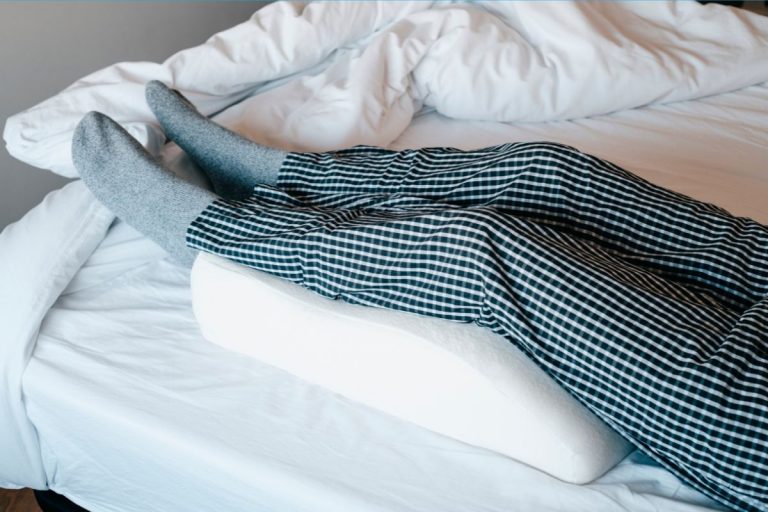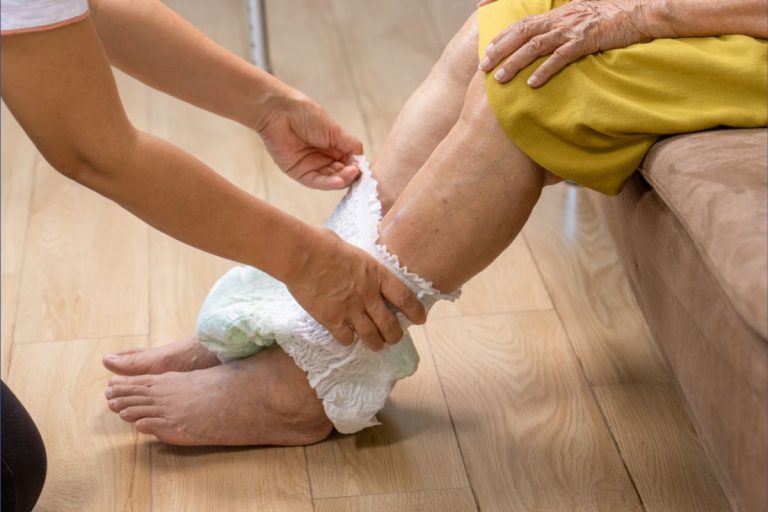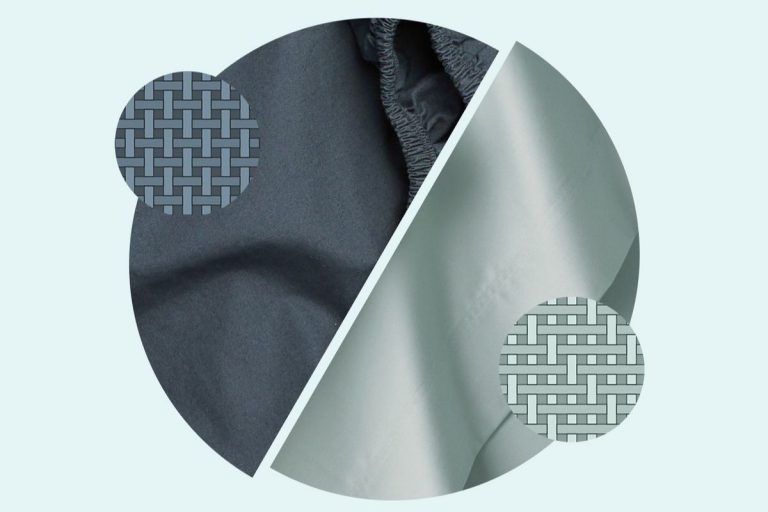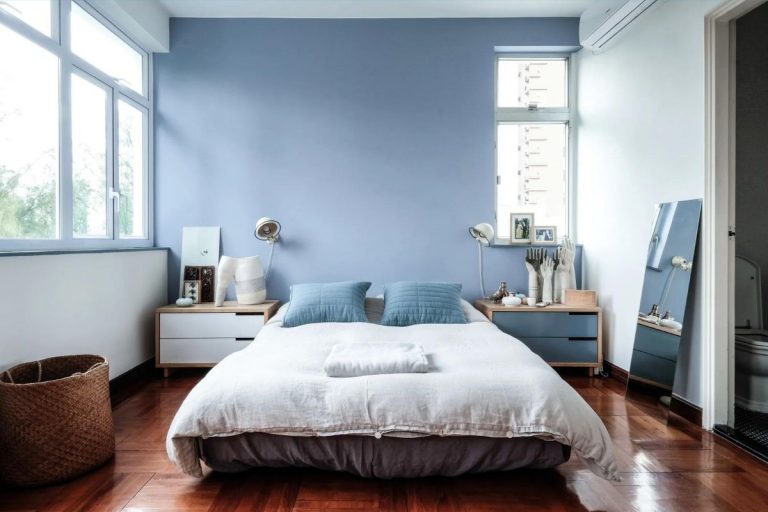Japanese futons are a piece of bedding that has a soul, a rich history, and tradition. Although many modern people living in Japan swapped them for beds, a futon remains a mandatory bed in many traditional homes. It’s no secret that the tradition of sleeping on futons traveled to the west, particularly to the USA, where they’re called Western futons and represent a cheap fluffy mattress sitting on top of the sofa.
However, we won’t talk about those futons in this article. Our sole focus in the following paragraphs is to show whether Japanese futons are comfortable. That being said, you’ll be introduced to the pros and cons of sleeping on a Japanese futon, especially if you’re restricted on a budget and suffer from intense back pain that simply won’t stop.
If you find sleeping on Japanese Futons uncomfortable, we also compiled a list of tips and tricks to improve your sleep experience on futons, as well as day-to-day time that you may use to lay down, rest, watch TV, surf the web or read a book.
Japanese futons refer to traditional Japanese beds, used throughout history by Samurai, ninja, rulers, geisha, and many other groups throughout history. It’s also a Japanese word for a mattress or a blanket.
Japanese Futon is completely made out of cotton. It’s narrow and thin compared to the Westernized futons that are put on sofas like mentioned above. The best thing about futons is their flexible design. Because they’re made out of cotton they are extremely breathable but placing them on a special tatami pad, the cushion-like thin pad that works as the “mattress” floor for these mattresses will make it even more comfortable and breathable. Another name for Tatami is Tatami floor.
The key difference is that the regular mattresses can be between 8 and 20-inch thick, while the Japanese futon has the height of a regular mattress topper, meaning 2 to 4 inches. Additionally, Japanese futons were designed to be folded afterward, meaning that they only serve the purpose of sleeping and light resting and are designed to save space, which is oftentimes too small in Japanese homes.
It’s worth noting that a lot of people choose to air their futons, because they’re made out of cotton, and that way, they can get rid of any foul smells caused by night sweats and flashes, or clear out the bacteria that may have accumulated from sleeping on the floor.
Japanese futons are also not equipped with coils or springs like most modern mattresses that were used inside for a while. Instead, it’s made purely out of natural and organic cotton. In some instances, some luxurious mattress brands make futons that are equipped with linen and even silk inside the mattress base. However, it’s worth saying that kind of a futon is considerably more expensive and less minimalistic.
Now, don’t think that the Japanese futon mattresses are that simple in terms of design. Just because they don’t consist of a spring base or dense memory foam supportive layers doesn’t mean that they don’t have multiple parts to them.
For instance, an average Japanese futon consists of three key parts – shikibuton, kakebuton, and makura.
Shikibuton represents the base, which is the futon bed, filled with cotton foam alongside other materials like silk and linen in those more expensive options. It is usually laid on the floor or tatami floor that would prevent its slipping.
Shikibuton base can sometimes consist of two Japanese futons lined one on another. Kakebuton is the layer or a blanket that covers the shikibuton. Finally, makura is the traditional Japanese pillow placed on top of the futon.
Note: Keep in mind that you will probably only need Shikibuton, you can use your blankets and pillow, although the aforementioned parts would make the fully designed and authentic Japanese futon more of a signature design and closer to its original tradition.
Are Japanese Futons Comfortable?
Now, about the most important question that this article is attempting to answer – yes, Japanese Futons can be extremely comfortable. Why wouldn’t they be? They were used for centuries. More importantly, only noble warriors and the gentry could sleep on them as they were the only ones to be able to afford expensively and not so widely spread cotton.
Futons as we know them originated from the 17th century when the noblemen of Japan started using them. Tatami mats were used long before that but the “futons” were made out of straw or other materials that didn’t feel like hugging or welcome as futons. They were rather used than beds because it was believed that people had it easier to roll up their beds and put them away during the day and preserve the space.
That being said, futons are incredibly comfortable, especially if they’re made out of quality materials and placed on the appropriate kind of floor. A lot of people have certain comfort concerns when they’re shopping for a mattress and deciding whether the Japanese futon could be the right thing for them.
Below, we’ll discuss the common pros and cons of sleeping on a Japanese futon. Keep in mind that not all people will find them comfortable, and although there are some pros and cons of sleeping on a Japanese futon, the final decision is individual and someone may have personal reasons why they like or don’t like sleeping on a futon.
That being said, below we’ll discuss the pros and cons of sleeping on a Japanese futon. Further, below you can find tips and tricks on how to improve your overall sleeping experience on the futon. They will be extremely helpful for people who are limited on space, but after trying futon out they didn’t like it and are seriously considering returning it.
Advantages of Sleeping on Japanese Futon
You’d be surprised to see how many benefits sleeping on a futon has. Continue reading to learn more.
It’s supportive: The weighted cotton on the Japanese futon gives a hugging sensation for your back and curves, depending on which side you sleep on. That way, it feels like a firm memory foam that gives you the feeling of sleeping on top, while still cuddling and conforming to your curves.
Great for back pain: Japanese futons, because of their placement on the floor and support feel great for people with lower back pain, particularly if they have sciatica. It feels supportive and keeps your body in a neutral position.
Samurai believed that they need to sleep in a straight position because they’d never know when the next attack is coming. They could sleep on their back in a straight position without worrying about back pain. Studies show that introducing a new bedding system could help with back pain. Perhaps, sleeping on futon could be that new bedding style.
No risk from injuries: Some people don’t prefer high-profile beds because they’re worried they could roll off the bed, fall, and injure themselves. If you’re a restless sleeper, you can rest assured that you’re safe from falling off the bed.
Good for saving space: If you live in a house or apartment with limited space, you’ll be able to simply roll the futon down and move it away. The best part is that you can leave it outside to air itself and that way clean it to use for the next night.
Natural Materials: As mentioned above, there are no synthetic or high VOCs materials and fire retardants. Shikibuton is made out of cotton and other materials like silk, all of which are natural and organic.
Breathable: Being made from natural materials like cotton, futons are breathable and won’t heat up, especially in the summer. Additionally, the great news is that you can make it even more comfortable by putting a tatami floor or placing it on a solid floor.
Silent: Shikibuton won’t make the noise that the traditional bed frames, especially those made out of chipboard. That’s comforting because it’s no secret that silent ambient is incredibly helpful and healthy for sleep.
You get to save up: Investing in a Japanese futon is much more affordable than investing in a bed frame plus the mattress which can often cost well over $1000.
Disadvantages of Sleeping on a Japanese Futon
As much as all these benefits mentioned above sound attractive and comfy for people, there are some advantages that you should be aware of.
The steep curve in getting used to sleeping on Futon: Some people may have a difficult time getting used to sleeping on a futon. That’s because many people spent most of their lives laying and sleeping on the high-profile bed. Sleeping, practically on the floor, means that you’re looking at the room from a different angle and may have problems falling asleep.
Creepy crawlies: If your apartment or house is prone to be visited by bed bugs, or any other kinds of bugs, you may have problems getting used to sleeping on a futon. Luckily, you can air your futon every day to ensure it’s clean.
Allergies: If you’re allergic to dust and dust mites, sleeping on a futon may not feel so good for you. At least, cleaning regularly helps you tackle the problem easily.
Too cold: Sleeping so close to the floor means you’ll feel colder, especially during the winter. The blanket used on futons is extremely comfortable and warming up, but given futons are quite breathable, you may feel extra cold during the winter months.
Care: Maintenance and care for the shikibuton are always high. Cotton absorbs moisture, so you’ll have to ensure to clean it regularly.
How to Sleep on Japanese Futons More Comfortably
Although there are some disadvantages of sleeping in Japanese futons, there are ways to make it more comfortable. Read below to learn additional tips for more convenient rest and a healthier sleep cycle on shikibuton.
Tatami Floor
Made out of rush, a tatami mat or floor is a great investment for your mattress. More importantly, it’ll make your mattress more comfortable. Putting it beneath your futon, you’ll be able to make more breathing room for your futon, especially during hot summer nights. It’ll also provide additional support for your futon, especially for heavier sleepers who need a firmer construction that won’t make them sink in their entirety.
Editor’s notes: You don’t have to use a tatami mat if you want to place your futon on a solid wooden floor. However, it’s still more than welcome if you want to keep your futon in a stable position and prevent traction and slipping if you want to toss or turn in the middle of the night.
Additional Mattress Topper
Mattress toppers are usually made out of memory foam which uses our pressure and weight to mold by the shape of our body. If you feel that your futon mattress is not supportive enough, you can invest in a mattress topper that can keep you warm during the winter.
It’ll support your back and give an additional comfy layer of fabric above your futon. Additionally, you can place it beneath your futon, although that’s not advisable if you want to relieve your hip or other joint pain.
Mattress toppers are also made using cool gel memory foam which will give you a cooling sleep experience if you want to cool down additionally during the summer.
Editor’s notes: There are also other types of mattress toppers such as latex and wool, and even down, in case you’re looking for more natural, and less synthetic-feel materials. Featherbed can also be a helpful investment.
Add Slats If You Can
If a tatami mat is not the right solution for you, you can add slats to make your futon more elevated and comfortable. Next to the tatami mat, this is the best investment, although it’s not as good if you’re limited in space and don’t want to use more space than necessary.
Editor’s notes: Depending on the mattress size and manufacturer, slats can be expensive. Luckily, a DIY version may be relatively easy to make.
Layer Comforters
If your Japanese futon mattress feels too firm as you’re trying to sleep on top of it, you can consider adding some layer comforters like covers, duvet covers, blankets, and other types of comforters around the house to give your mattress a softer and plusher sensation as you lay down on it.
Also Read:





